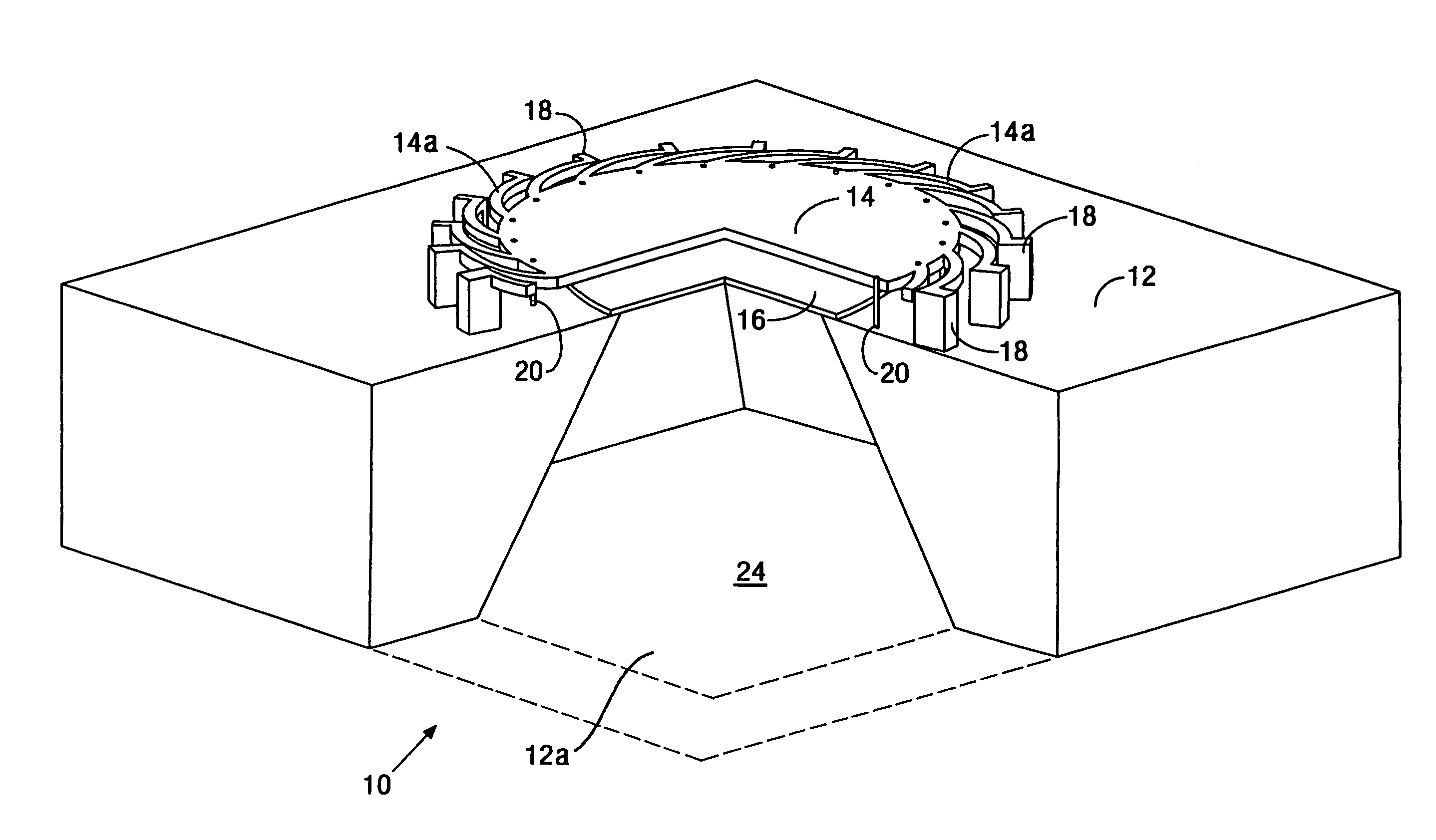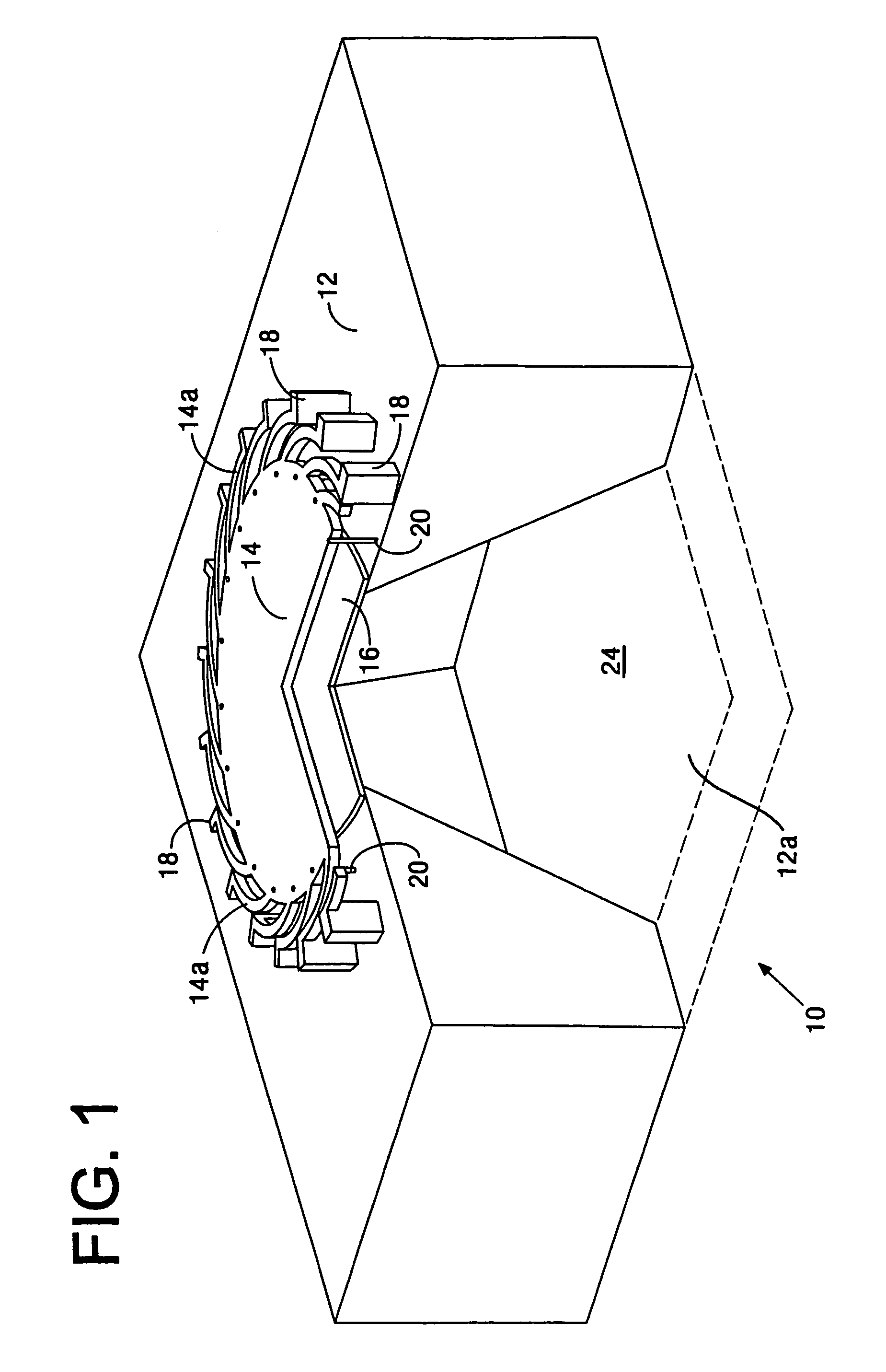Silicon microphone
a microphone and silicon technology, applied in the field of silicon microphones, can solve the problems of reducing the mechanical compliance of the microphone diaphragm, affecting the performance of the microphone, so as to achieve the effect of reducing the parasitic capacitan
- Summary
- Abstract
- Description
- Claims
- Application Information
AI Technical Summary
Benefits of technology
Problems solved by technology
Method used
Image
Examples
Embodiment Construction
[0025]While this invention is susceptible of embodiment in many different forms, there is shown in the drawings and will herein be described in detail a preferred embodiment of the invention with the understanding that the present disclosure is to be considered as an exemplification of the principles of the invention and is not intended to limit the broad aspect of the invention to the embodiment illustrated.
[0026]A solid-state transducer 10 according to the invention is illustrated in FIG. 1. In the present description, the transducer 10 is shown as a condenser microphone. However, the transducer could be other devices, such as a pressure sensor or an accelerometer. The transducer 10 comprises a semi-conductor substrate 12 forming a support structure and having an opening 12a. The transducer 10 further includes a thin-film structure forming a diaphragm 14 responsive to fluid-transmitted acoustic pressure. The diaphragm 14 is disposed over the opening 12a. The diaphragm 14 includes ...
PUM
 Login to View More
Login to View More Abstract
Description
Claims
Application Information
 Login to View More
Login to View More - R&D
- Intellectual Property
- Life Sciences
- Materials
- Tech Scout
- Unparalleled Data Quality
- Higher Quality Content
- 60% Fewer Hallucinations
Browse by: Latest US Patents, China's latest patents, Technical Efficacy Thesaurus, Application Domain, Technology Topic, Popular Technical Reports.
© 2025 PatSnap. All rights reserved.Legal|Privacy policy|Modern Slavery Act Transparency Statement|Sitemap|About US| Contact US: help@patsnap.com



